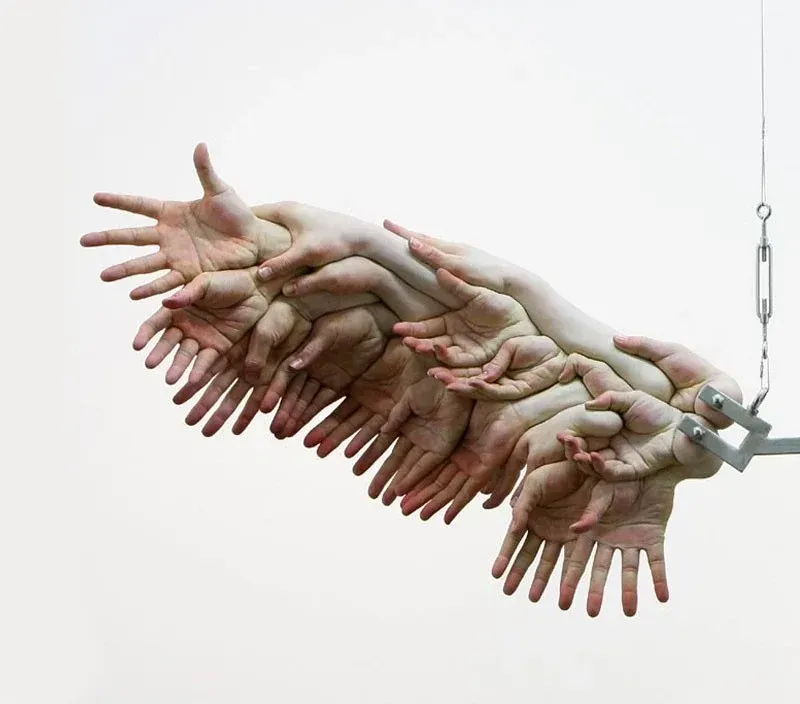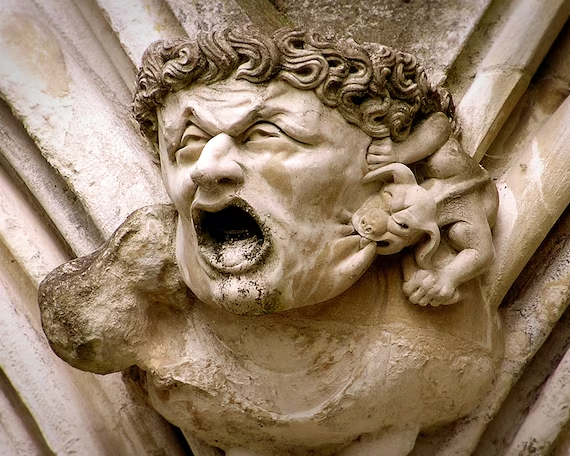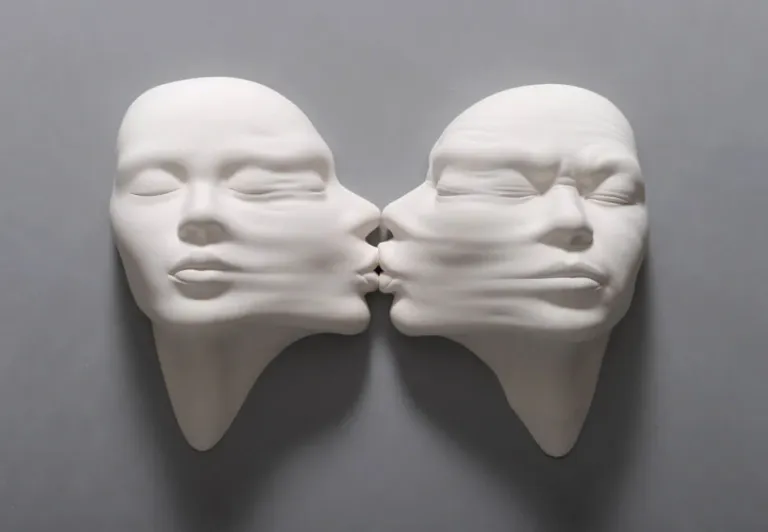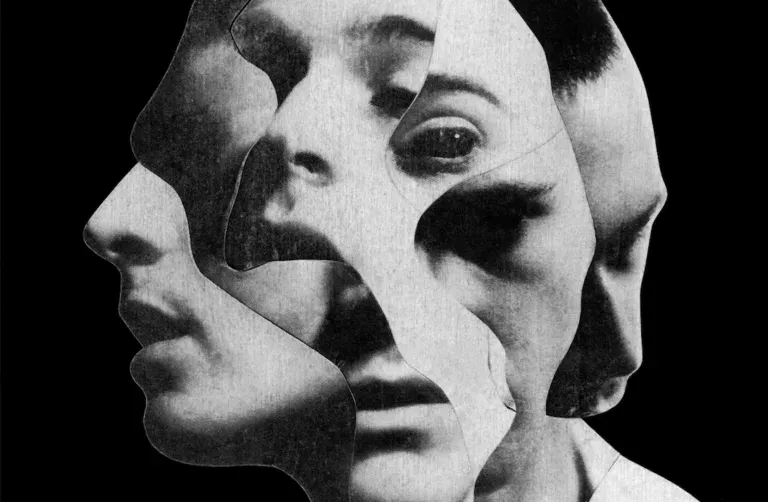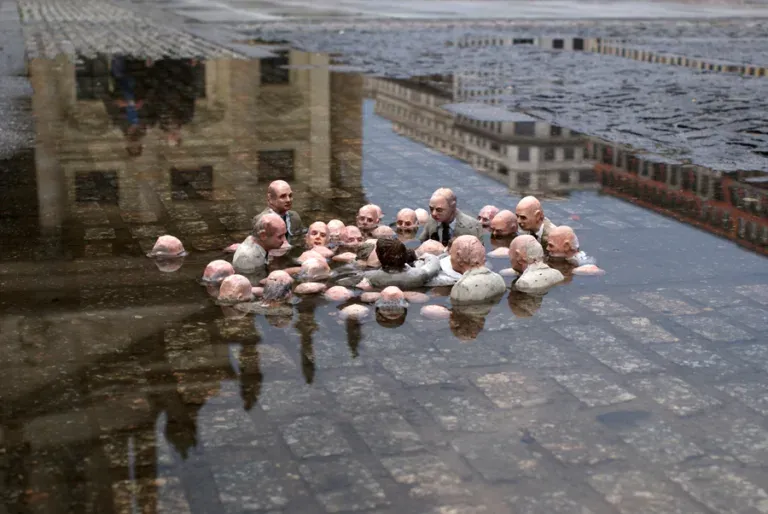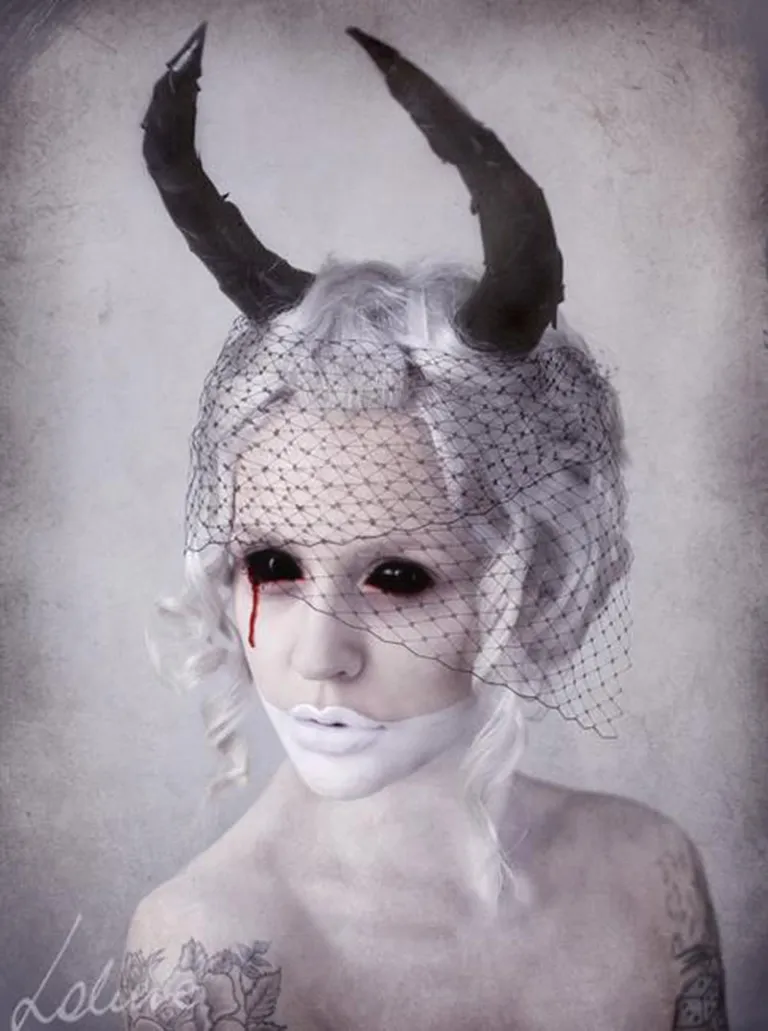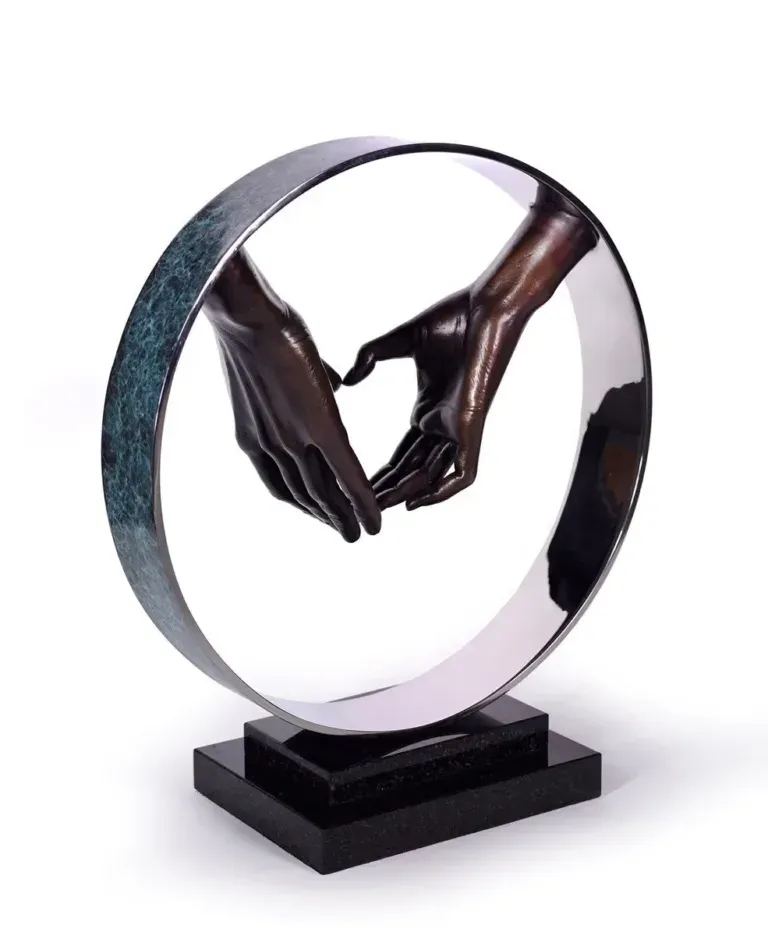Choi Xooang: The Art of Transformation and Human Fragility
Choi Xooang: The Art of Transformation and Human Fragility
Choi Xooang is one of the most innovative and provocative sculptors in the contemporary Korean art scene, known for his unsettling and visceral works that explore themes of fragility, transformation, and human identity. His art challenges traditional conventions of sculpture, using the human body as a starting point for broader reflections on the existential condition of individuals, physical alteration, and our vulnerability as human beings.
The Human Body as a Metaphor for the Human Condition
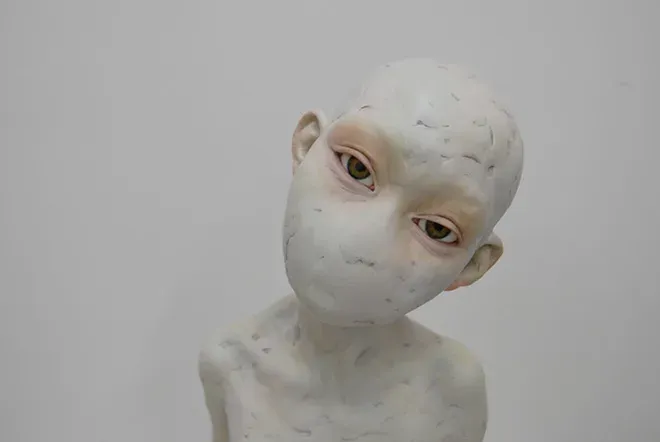 Choi Xooang’s sculptures are often characterized by human figures that appear fragmented, decomposed, or subjected to extreme physical transformation. In many of his works, the skin seems to burst, the body deforms, hands or feet lose their original shape, and the figures appear to be in a state of dissolution or “breaking.” However, despite these distortions, his works are not merely unsettling: they are deeply emotional, prompting reflections on human experience, aging, suffering, as well as resilience and the struggle for survival.
Choi Xooang’s sculptures are often characterized by human figures that appear fragmented, decomposed, or subjected to extreme physical transformation. In many of his works, the skin seems to burst, the body deforms, hands or feet lose their original shape, and the figures appear to be in a state of dissolution or “breaking.” However, despite these distortions, his works are not merely unsettling: they are deeply emotional, prompting reflections on human experience, aging, suffering, as well as resilience and the struggle for survival.
An iconic example of his work is the series of sculptures in which the human face is carved to resemble a shattered mask, where the facial lines crack like glass or rock, revealing an eerie interiority. This type of visual representation evokes the fragility of our identity, as if the body is constantly at risk of “breaking,” transforming into something else, or losing its original coherence. It is an invitation to reflect on the transient condition of existence, the tension between physical integrity and vulnerability, between being and becoming.
Materials and Technique: A Sculpture of Great Realism and Surrealism
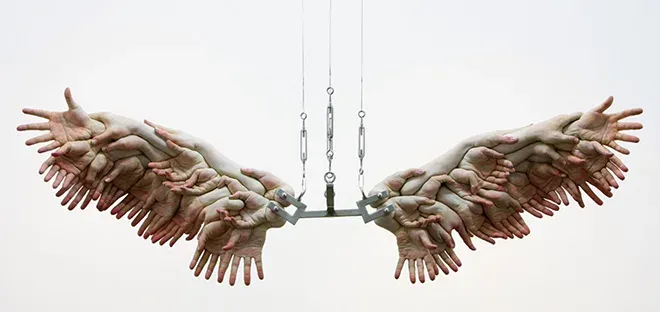
Choi Xooang uses a variety of materials to create his sculptures, but he is particularly known for using resin, silicone, bronze, and other materials that allow him to craft incredibly detailed and realistic figures. His ability to sculpt the human body with astonishing precision, combined with his skill in manipulating these materials to make his works appear almost alive, creates a contrast between the familiarity of human forms and the unease generated by their distortion.
His sculptures are never static; even though they appear “frozen” in time, each work suggests movement, tension, and change. The fluid lines of deformed bodies, the facial expressions that seem to convey restrained emotion or silent pain, communicate a continuous transformation, a process that never stops. Choi Xooang’s technique, blending realism with surrealism, ensures that viewers feel both drawn to and repelled by his works, creating a complex emotional response that provokes deep reflection.
Notably, his use of silicone and resin enables the artist to create a “soft realism,” where the surface of his sculptures appears almost alive and palpable, as if the flesh itself were frozen in a moment of metamorphosis. This kind of work, while maintaining a hyper-realistic quality, also evokes a sense of alienation, as if the human body has become something foreign and incomprehensible.
Themes and Concepts: Deformation as a Reflection on Contemporary Life
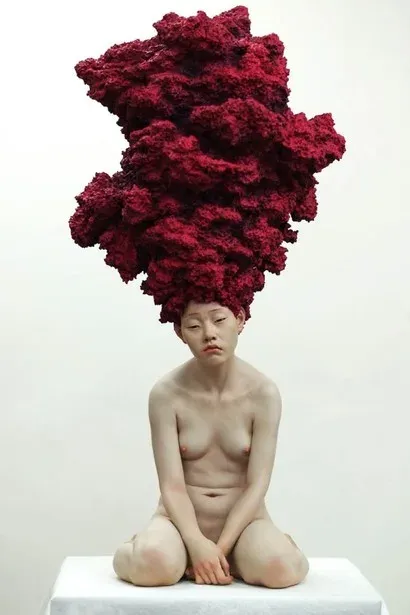 Choi Xooang’s sculptures are not merely about aesthetics or formal exploration; they are also a powerful commentary on the condition of individuals in the modern world. The deformations of bodies and faces in his works can be seen as metaphors for how people might feel fragmented or disintegrated in contemporary society. The pressure to conform, the search for a coherent identity in a globalized and fragmented world, and the constant struggle with one’s own vulnerability are recurring themes in his works.
Choi Xooang’s sculptures are not merely about aesthetics or formal exploration; they are also a powerful commentary on the condition of individuals in the modern world. The deformations of bodies and faces in his works can be seen as metaphors for how people might feel fragmented or disintegrated in contemporary society. The pressure to conform, the search for a coherent identity in a globalized and fragmented world, and the constant struggle with one’s own vulnerability are recurring themes in his works.
In a sense, Choi Xooang seems to suggest that the “breaking” of the human body, its deformation or disintegration, is not merely an aesthetic theme but a way to explore the psychology and psyche of the individual. His sculptures reflect a sense of loss, disconnection, isolation, but also resilience. The human form, though damaged and distorted, retains an energy that invites reflection on the capacity to confront and overcome life’s difficulties.
In an era where body image and identity are under immense pressure – whether through beauty standards, aesthetic alterations via plastic surgery, or the superficiality of social media – Choi Xooang’s work invites us to consider the fragility of our existence and the constant mutations it entails.
A Universal Message: Vulnerability and Resilience
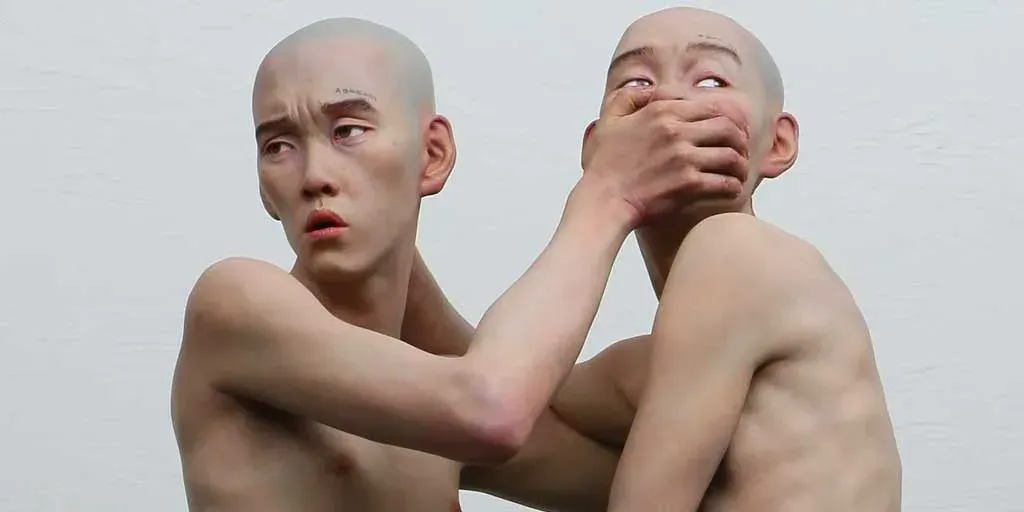 Despite the visual violence of his sculptures, Choi Xooang does not seem intent on painting a purely negative picture of the human condition. His works, though unsettling, are never entirely devoid of hope. On the contrary, they speak of an intrinsic strength that resists suffering and disintegration. The deformations of bodies in his works can be interpreted as testimonies of a humanity that, despite its vulnerabilities, is capable of continuing to fight, transform, and reinvent itself.
Despite the visual violence of his sculptures, Choi Xooang does not seem intent on painting a purely negative picture of the human condition. His works, though unsettling, are never entirely devoid of hope. On the contrary, they speak of an intrinsic strength that resists suffering and disintegration. The deformations of bodies in his works can be interpreted as testimonies of a humanity that, despite its vulnerabilities, is capable of continuing to fight, transform, and reinvent itself.
His work leads the viewer to confront their own humanity, questioning our relationship with the body, beauty, and perfection, but also with pain and loss. Ultimately, Choi Xooang’s art proves to be a powerful visual experience and, at the same time, an invitation to profound reflection on the universal challenges we all face in life.
Conclusion
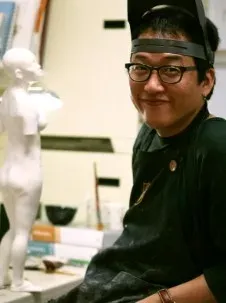 Choi Xooang is an artist who uses sculpture not just to represent form but to explore and challenge the invisible forces that shape our physical and mental existence. His works are both a meditation on the fragility and strength of human beings and an observation on the transformation and unease that permeate our daily lives. With his extraordinary technical skill and the conceptual depth of his works, Choi Xooang has established himself as one of the most relevant voices in contemporary art, inspiring audiences to grapple with the existential challenges we all face.
Choi Xooang is an artist who uses sculpture not just to represent form but to explore and challenge the invisible forces that shape our physical and mental existence. His works are both a meditation on the fragility and strength of human beings and an observation on the transformation and unease that permeate our daily lives. With his extraordinary technical skill and the conceptual depth of his works, Choi Xooang has established himself as one of the most relevant voices in contemporary art, inspiring audiences to grapple with the existential challenges we all face.
 Subscribe to our YouTube channel
Subscribe to our YouTube channel
Explore the world of Horror Art
